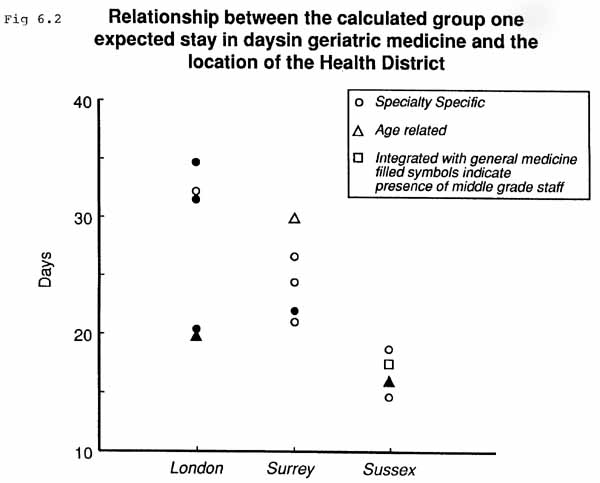Nosokinetics
One size does not fit all:
structure, pattern, process and location play their part
By Peter Millard
(comments to rjtechne@iol.ie)Following my contribution on ‘Old Physics’ in the last news letter my eyes opened. I’ve been living in the past. The future is different. Reading Fritjof Capra’s 1996 book, The Web of Life. A new synthesis of mind and matter [1], I realised that a whole new dimension -autopoietic networks - self bounded, self-generating and self perpetuating systems - has to be grasped to begin to understand the reality of clinical care.
Living in the past
First Elia El-Darzi from the Harrow Campus of Westminster University said he had discussed Ouspensky’s comparison between Old and New Physics (see NKNews4.3) with a colleague who said the new physics is “outdated”. “That’s not the point” I replied. “The analogy with ‘old physics’ highlights the problem, it’s not about new physics”. But now I realise it is, and it’s about biology, systems theory and many other aspects as well.Loy Lobo from BT Health emailed and suggested that I should look at System Dynamics. On the Systems Dynamics Society web site, I came across an article written in 1991 [2] by Jay W Forrester, which quotes Skinner, making an analogy between the knowledge of the Greeks and the modern world:
"Physics and biology have come a long way, but there has been no comparable development of anything like a science of human behavior... Aristotle could not have understood a page of modern physics or biology, but Socrates and his friends would have little trouble in following most current discussions of human affairs." [3]

Bridging the gap
Reading further, my thoughts turned to the 1980’s when we started a BSc module and to the workshop at the 2005 Craiova conference hosted by Florin Gorunescu. Then I realised taking a business analogy “We have to know how and why the elephant dances.”

Innovation: Collaboration
When we started the BSc Module on Ageing the students knowledge of basic anatomy was the same as mine, but their knowledge of the mechanisms of movement, physiology, biochemistry, molecular biology, genetics, psychology was streets ahead of mine. To solve this problem, collaboratively, the professors agreed to give the lectures on ageing, while I sat in the back and made notes. What surprised them, and me, was that they too had to learn about the ageing aspects of their subject, for the impact of the ageing on structure and function was not part of their syllabus. Thus a new course began, which ended when the Research Evaluation Exercise began and colleagues were told to concentrate on research. (cont. p3).
Innovation: structure
In 1948, when the NHS began, responsibility for providing long term institutional care was taken from local government and placed on the Regional Hospital Boards. From that unlikely beginning the specialty of geriatrics began. Evidence of lack of medical leadership and rehabilitation motivated the change. All services had to be developed. The aim was to solve the problem of ‘bed-blocking’ in acute hospitals.
Innovation: pattern
By the 1980’s three styles of practice -needs related, age related and integrated - had emerged dependent on the local facilities, the aptitudes of the consultants, relations with colleagues and access to beds in acute hospitals.Innovation: process
In 1991, Amy Roberts, a young American doctor astutely observed that Sussex departments of geriatric medicine treated patients faster than those in Surrey, and Surrey was faster than London. See figure2. Note that the differences are independent of the pattern of clinical practice.The research involved visiting the hospitals, interviewing medical and nursing staff, observing the facilities and collecting census data to model the flow. Thousands of facts were collected, but only three related to ease of discharge of long stay patients and poverty of rehabilitation explained these differences. (see Millard’s PhD thesis at:
http://www.nosokinetics.org/publications.htm

Crashing the system
During the 1980s and early 1990s government fostered a entrepreneurial boom in voluntary and private services. Open access to public funds for poor people meant acute hospitals could bypass the geriatric medical services and discharge potential long-term patients directly to long-term nursing and residential care. When expenditure got out of control, social services were given responsibility for purchasing long-term. As geriatric medical services were no longer needed, physicians trained in geriatric medicine took on responsibility for acute care, and the physicians previously doing acute care moved over to expand organ based medical services. Now ‘Bed-blocking’ has returned and the way forward is unclear.
Light in the darkness
In June 2007, researchers reporting to UK Department of Health in “Modernising Adult Social Care - What’s Working” [4] made the following observations:P106 - 107 “… (A) rational linear approach to policy ... assumes policy ‘levers’ can be pulled and that action will follow without distortion until it reaches the ’front line’.”
“Policy does not come neatly tied up in sealed packages. It is made as people and organisations interpret it , translate it, try to make it meaningful within the frames of reference they bring to their work, and shape it in innovative ways. Indeed if this did not happen, innovation would not be possible.”
“In the case of social care … implementation relies on a large number of actors …. And rather than living and working in a simple organisational hierarchy, these actors are interdependent. They must negotiate action through a different and overlapping networks and sets of personal relations between staff and organisations.”
Conclusion
The world population is ageing. The cost of medical care is rising. The time is right for a world wide initiative to create a science base for the planning of health and social care. Which rejects ‘levers’ and recognises the symbiotic nature of co-operation in knowledge based systems.
Notes and References
1. Capra, Fritjof (1996) The web of life: a new synthesis of mind and matter. Harper Collins, London2. Forrester, J.W. Systems Dynamics and the Lessons of 35 years. Chapter in the Systemic Basis od Policy Making ed Kenyon B.D. Greene.
http://sysdyn.clexchange.org/sdep/papers/D-4224-4.pdf
3. Skinner, B. F. 1971. Beyond Freedom and Dignity. New York: Bantam Books. 215 pp
4. June 2007 Quote 2822179/ DH Publications Orderline dh@prolog.uk.com<[>
Some navigational notes:
A highlighted number may bring up a footnote or a reference. A highlighted word hotlinks to another document (chapter, appendix, table of contents, whatever). In general, if you click on the 'Back' button it will bring to to the point of departure in the document from which you came.Copyright (c)Roy Johnston, Ray Millard, 2005, for e-version; content is author's copyright,